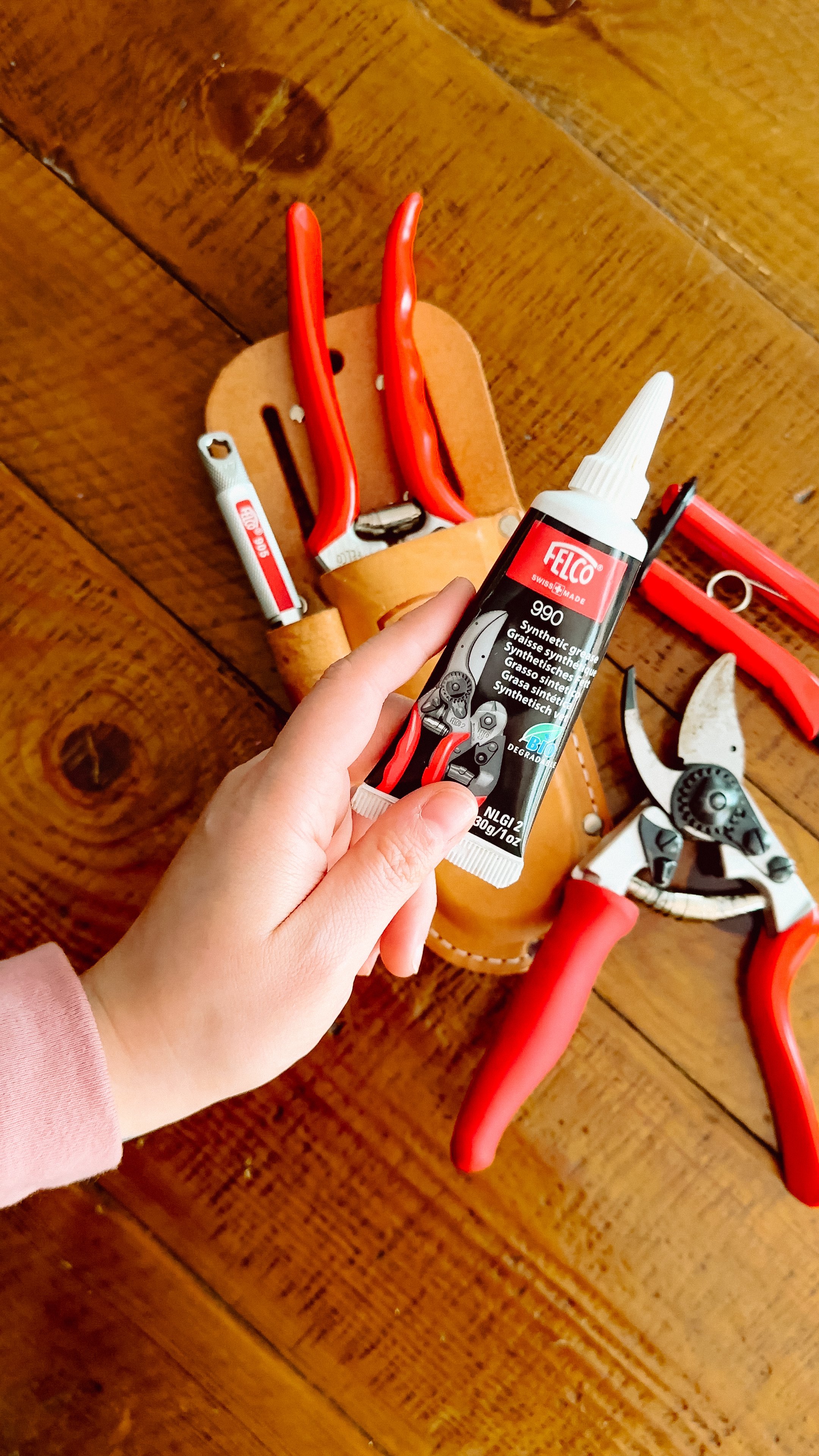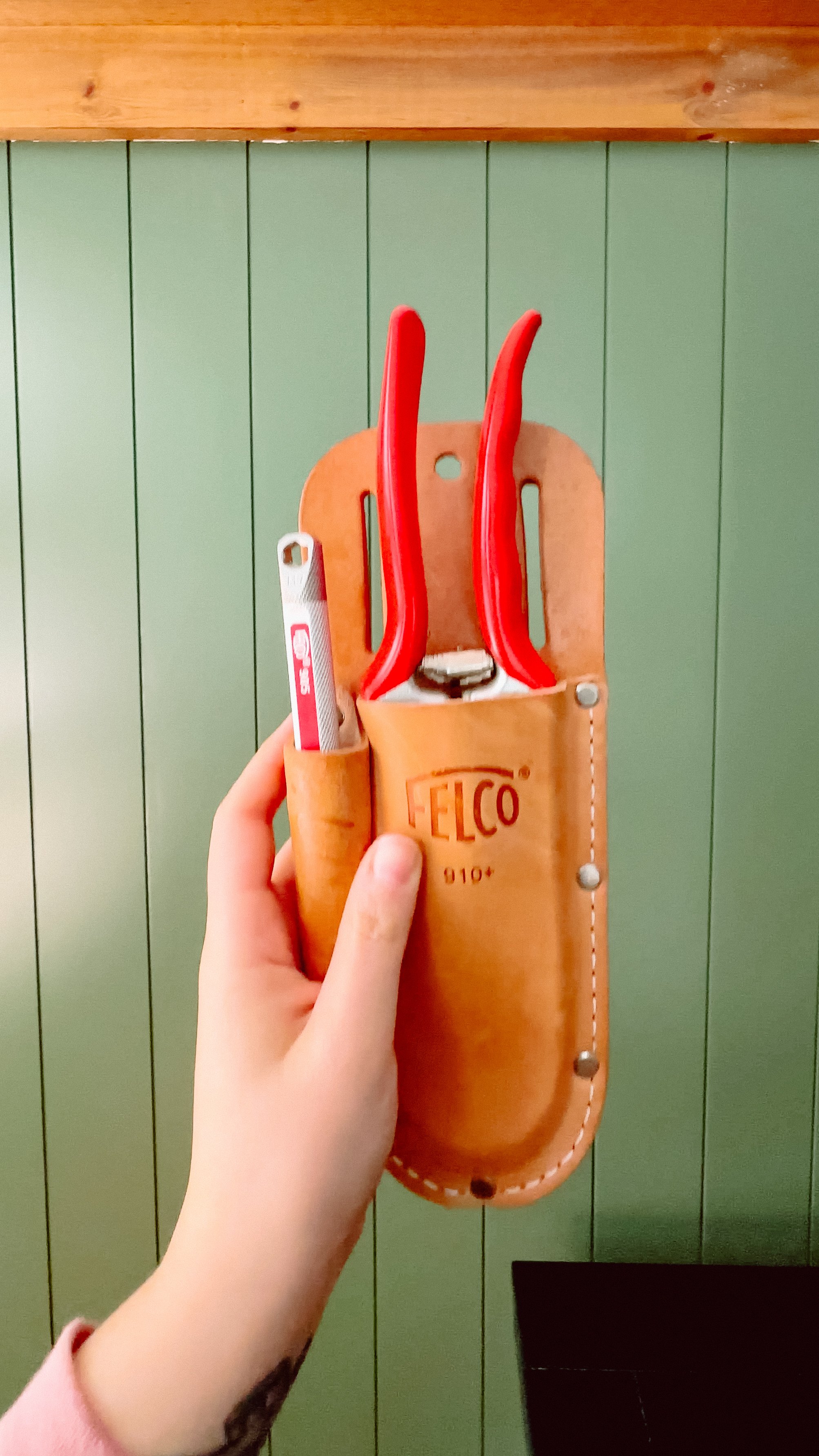Garden Tool Maintenance | The Best Garden Tools For Chronic Pain
I know we're all anxious to get into garden planning, but there's one thing that's just as important to having a successful garden this year as a good plan; the tools that you're going to use to garden. I don’t use many different kinds of garden tools since I like to keep things simple, but the garden tools that I use have to withstand a lot of use, as well as be comfortable enough to use for extended periods of time. I prefer to buy things once, and I’d rather invest a little more in a tool that I will have for a lifetime than continually replace and send old ones to the landfill.
The reason comfortable garden tools are especially important for me is that I have chronic pain. About ten years ago I was diagnosed with arthritis, and this affects me not just in terms of pain but in terms of weakness that makes gripping things difficult - so having garden tools that are comfortable and easy to grip is essential for me, and I’ve found through a lot of trial and error which ones work best and which ones just make things worse.
But I’ve also realized it’s less about having what you’d think of as a comfortable handle and more about having a garden tool that works so well, it reduces the amount of time you have spend using it - because the reality is that no matter how comfortable a garden tool is, when you have chronic pain you’re going to hit a time limit (or number of available spoons) faster than someone who doesn’t, no matter how “comfortable” that garden tool may be.
Effective garden tools are sharp and sturdy, don’t wobble, and have features that make the task itself easier and faster. They are typically built to last using classic construction methods that withstand the test of time. The only downside is that they usually cost a bit more upfront. I wish I had a workaround for this, but for me personally it is worth the investment in order to be able to continue participating in hobbies that feel essential to my identity like gardening, regardless of my physical limitations.
I'm going to walk you through all the garden tools that I use and I'm also going to tell you my strategy for daily maintenance versus seasonal maintenance, so let's get started!
The Best Garden Trowel
I don't think I have to tell you why a trowel is important, but I will tell you to get one that has a beveled edge almost like a blade to make cutting through soil easier. I like my trowel to have a bit of weight behind it with a solid metal blade and wood handle. This metal and wood trowel is B-Corp certified, sustainably produced and built to last.
The Best Garden Weeder
A Japanese sickle is extremely sharp which makes breaking up weeds by cutting through the roots themselves extremely easy. With my chronic pain and fatigue, weeding is one of the more strenuous garden tasks I have to do, and this greatly eases a lot of the strain I experience. I don't really do any tilling, but this is also great if you do need to kind of loosen up the dirt in some spots. This Japanese sickle has served me well for many years now and the blade is still as sharp as the day I got it.
The Best Garden Pruners
Up until recently the Felco 2s were my number one pick for pruning and clipping anything larger, and while I still love them last year Felco reached out to me and offered to send me their Felco 15s. What's really amazing about these pruners is the handle rotates when you squeeze it close, which takes so much of the pressure off of your hand, you would not believe it. The first time I tried them I practically cried because it made such a huge difference in how comfortable the grip was. The ONLY downside is the Felco 15s have a slightly smaller blade than the Felco 2s, so I still keep the Felco 2s around since they're great for larger projects.
The Best Garden Snips
Garden snips get the absolute most use in my garden, since they’re compact and lightweight they are perfect for harvesting and removing dead leaves from vegetable plants, as well as pruning suckers from tomatoes and deadheading flower plants. Many people I know, myself included, swear by these Felco 322 snips for just this purpose.
A couple small things that I consider garden tools you may consider garden accessories:
Plant labels
You don't need to get fancy with these. These thin white plastic ones can be reused again and again with a paint marker and are durable and easy to read from a distance.
Velcro plant tape
If tying tons of knots for trellises is uncomfortable for you like it is for me or just generally time consuming, this velcro plant tape will make all the difference. I love this stuff - you can custom fit it to any size that you need and you can reuse it over and over again.
How to Find Comfortable Garden Tools
When you're looking for a handle that's going to be ergonomic, it’s easy to jump straight for the options with a cushioned handle, but I’m going to caution you against this. Unfortunately in a lot of cases those foam cushions aren't very long lasting and they tend to deteriorate in sunlight. You will have a lot more luck finding comfortable tools if you are able to invest in quality tools built with a specific purpose in mind. But generally speaking, I often find wooden handles to be most comfortable. They just feel slightly “softer” than a metal based handle, and they hold up really well. Most also have a bit of a curve to them so they almost have that hand carved feel.
Daily Garden Tool Maintenance
My general rule of thumb is I'm trying to keep my tools as clean as possible throughout my daily tasks so that I don't really get to this point where they're super dirty. I'm sure most gardeners have also had the humbling moment where you realize that you left a tool outside in the rain, only to find it weeks later impossibly rust. Last year I came up with the solution; I have a container outside that I can keep them in that’s actually connected to my raised beds so I can just drop them and go. I think the most important thing here is reducing that friction and making it super accessible and easy. Something like a mailbox mounted somewhere can be a really great affordable solution for storing your garden tools.
Seasonal Garden Tool Maintenance
In the winter when things are slow is the perfect time to give all your garden tools a once over and some deep cleaning/TLC. Trowels, hand rakes and hoes generally just get brushed off with a dry rag and any wooden handles oiled with linseed oil. Blades are a little bit trickier and require some additional attention. I always keep a Felco 905 sharpener around for this task, it is a really great all purpose sharpener when you've got tools with blades that you need to maintain. But really a bit of Felco 990 grease, a sharpener and some clean rags are all you’ll need to get started!
Cleaning snips
My harvest snips always have some plant residue buildup on the blades themselves that I want to clean off. In terms of daily maintenance with these, I sanitize the blades with an alcohol wipe pretty much every time that I use them because we don't want to be transferring any diseases from one plant to another. For example last year I had an experience with black rot on my grapes which can transfer to other plants and thankfully when I discovered this I didn't have to panic because I knew I had taken care of sanitizing those blades before using them on any other plants.
For something like these snips where they are really only cutting through really lightweight plant material you're not going to notice a lot of burrs on the blades themselves most of the time, but you can always do a quick sharpen just to give them a fresh edge.
Sharpening and cleaning Felco F2s
If your Felcos aren’t looking super rusty or having trouble opening and closing smoothly, you can usually get away with just a light sharpening. In general, it’s a good idea to take them apart once a year to regrease the internal mechanisms. If you do need to take these apart, never use water, always use some kind of oil based lubricant cleaner. Take a photo before you take them apart so that you know how it goes back together. And of course, we're dealing with a very sharp blade here so make sure that you’re holding with a secure grip and cleaning/sharpening away from your body.
Keeping your garden tools in good shape doesn’t have to be difficult, but it is important to prioritize finding time each winter to keep them working like new. What other garden tools would you like me to cover next?



